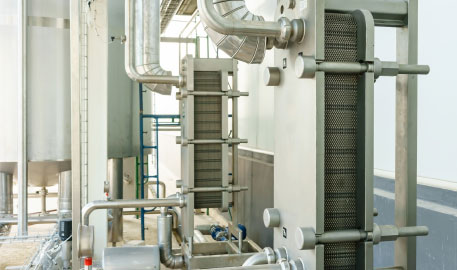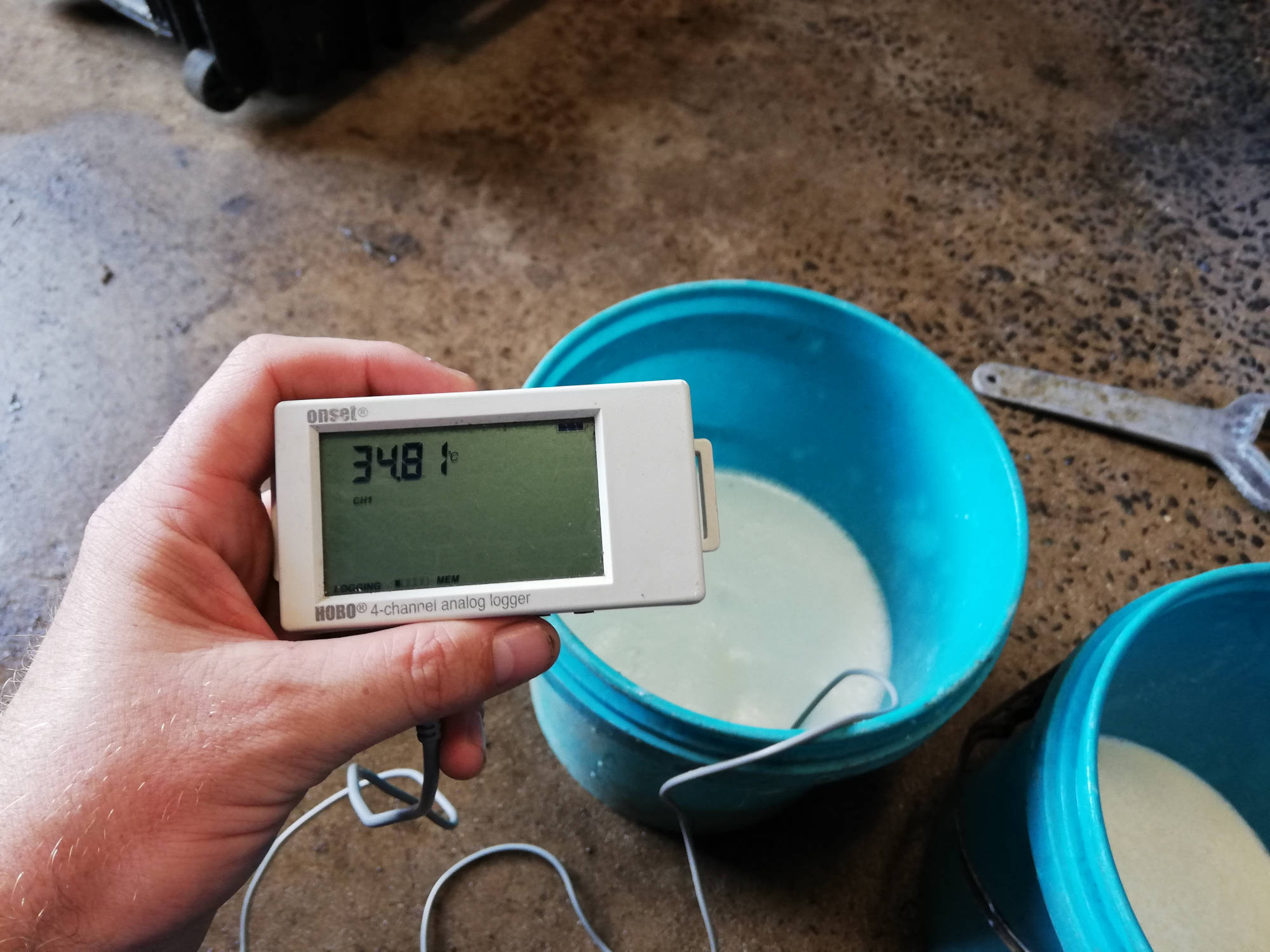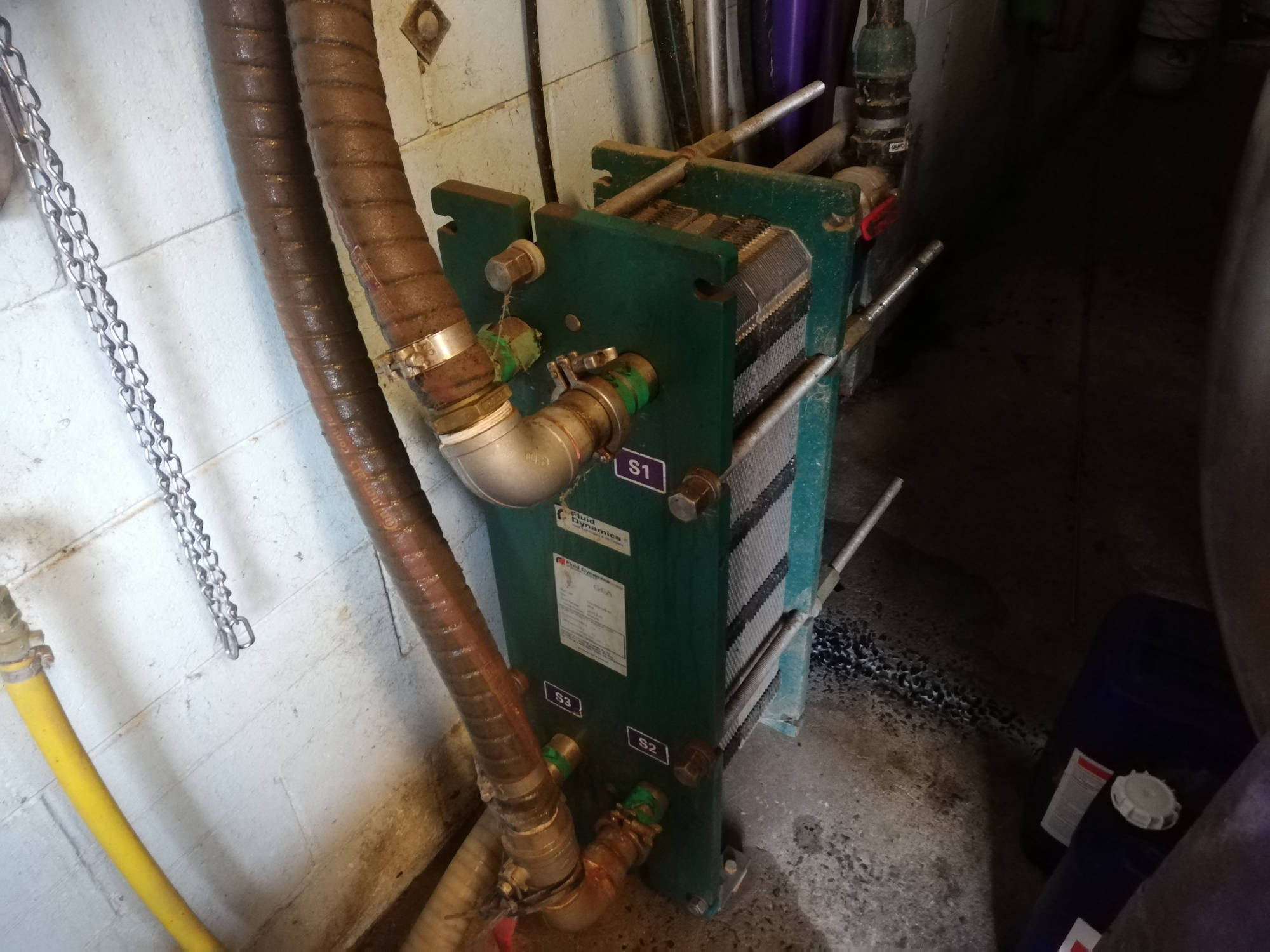
Plate heat exchange units or ‘plate coolers’ provide rapid cooling of liquids. For this reason, they are an important piece of equipment for many industries, and knowing how they work is invaluable for determining how to get the most out of your cooling systems. This article will cover the most important factors to consider and adjust in order to make your plate cooler run as efficiently, and cost-effectively, as possible!
A standard plate cooler contains several channels that are separated by metal plates. Holes and gaskets at the top and bottom of the plates control the flow through the plates and allow for two different fluids to pass through the system without mixing. This is demonstrated in the image below, where a hot and cold fluid is pumped through the plate cooler and flow through alternating channels.

As the fluids are pumped through the channels, heat is transferred from the hot liquid and into the cold liquid through the metal plates. This results in the cooling of hot liquid and consequently, warming of the cold liquid.
Any cooling that can be performed within the plate cooler results in less cooling required from other more energy-intensive equipment (such as refrigeration units). Additionally, if less cooling is required by refrigeration units, this will improve the long-term performance and lower the maintenance requirements of these units. In summary, significant cost savings can be achieved by ensuring the plate cooler is operating at optimal efficiency.
Temperature of Cold Fluid
The primary reason that these systems reduce the energy required for cooling is because they generally use a ‘free’ water source for cooling, such as a bore, rainwater tank, or on-site dam. A plate cooler that uses water from one of these sources is commonly referred to as an ambient plate cooler.
As plate coolers usually run with small pumps, the energy use is significantly lower when compared to the energy required for the same cooling by a refrigeration unit. For this reason, if a significantly cooler source for the water can be used (such as a bore source over a dam), this will add more value to the system.
Expected Temperature Difference
Industry guidelines suggest that the temperature difference between the cold fluid entering the system, and the hot fluid leaving the system should be no more than 3°C (in a dairy for example). When the temperature difference is greater than this, it is an indicator that inefficiencies likely exist within the sizing or operation of the system.
The common reasons for a temperature difference greater than 3°C are described below:
-
Flow Rate of the Pumps
For effective transfer of heat through the plates, the cold fluid should be pumped through faster than the hot fluid. Typically, a ratio of 3:1 for the flow rates is required (i.e. the cold fluid should be pumped through at least 3 times faster than the hot fluid). If the flow rate is too slow, the heat transfer will be affected. The flow rate of both liquids can be measured by timing how long it takes to fill a container of a known volume, then converting this to liters per minute (L/min) to determine the flow ratio.
-
Inadequate Sizing for Volume
The number of plates on a plate cooler relates to its capacity. Generally, more plates mean a higher volume can be processed efficiently.
If production has changed since a plate cooler was first designed and installed, it may be worth having a technician determine if the size of the system is still adequate for the new volume of fluid being processed.
-
Absence of Regular Maintenance
Plates require cleaning, particularly if the fluids passing through them are likely to leave residue and/or debris on the plates. Any contamination on the plates will reduce the heat exchange that can occur between the plates.


Pressure cleaning plates within the unit
Case Study: Change of water supply for an ambient plate heat exchanger on a Dairy Farm
A dairy farm was assessed and found to have a cooler water source available through an on-site bore. Additional pipework could be installed to use this water through the plate cooler. This meant that the milk was cooled to a lower temperature, resulting in a lower cooling requirement for the milk vats. Alongside cleaning of the plates, this measure resulted in a savings of 7,000 kWh/year ($2,152/year on the current tariff rates) and had a simple payback period under one month.


Testing an ambient plate cooler at a Dairy Farm
Summary of what to do to check your plate cooler:
- The first step to determining if your plate cooler is operating at the optimum temperature is to measure the temperature of the fluids entering and exiting the system. As a general rule, an efficient system will have a maximum difference of 3°C between the cold liquid entering the plate cooler and the hot liquid leaving it. If the difference is greater than 3°C, several factors can be checked to determine where inefficiencies may lie.
- Measure the flow rates of the hot and cold fluid and check that the cold fluid is pumped at least three times faster through the plates when compared to the hot fluid.
- Ensure the system is cleaned and serviced on a regular basis, particularly if the fluids are likely to leave contaminates on the plates. Also, a service technician may be able to check that the system is adequately sized for the volume of liquid that requires cooling.
- Additionally, check the temperature of any available water sources and, if possible, ensure that the plate cooler is connected to the coldest source.
These steps will assist in maximizing the amount of cooling at this stage of the process, reducing the requirements for more energy-intensive refrigeration equipment.
Any questions about your plate cooler? Please feel free to get in touch!